Nature Knows and Psionic Success
God provides
Tuning Into Brainwave Rhythms Dramatically Accelerates Learning in Adults
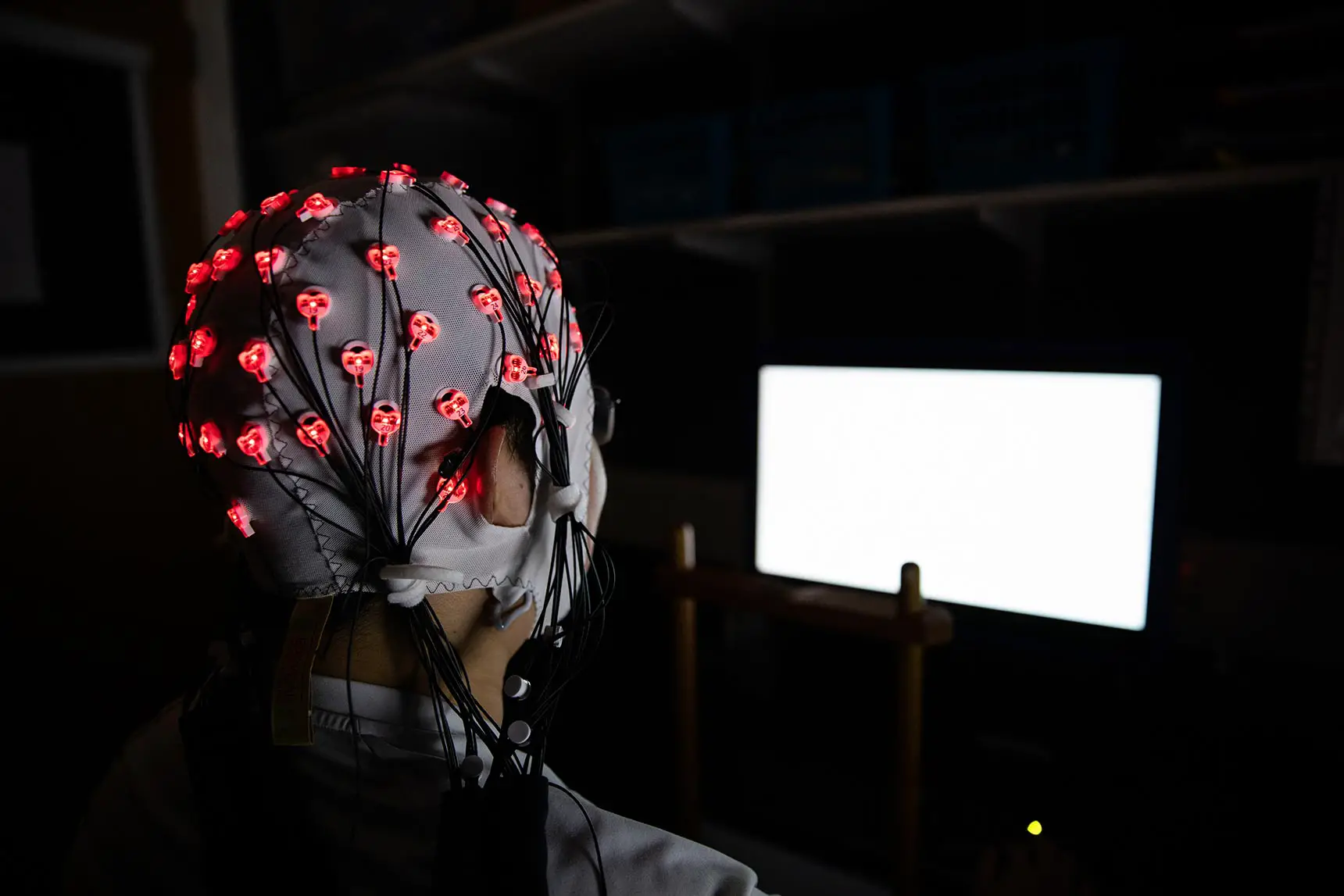
The brainwaves experiment set up in the Adaptive Brain Lab, led by Prof Zoe Kourtzi, in the University of Cambridge’s Department of Psychology. Credit: University of Cambridge First study to show that delivering information at the natural tempo of our neural pulses accelerates our ability to learn.
Participants who received a simple 1.5-second visual cue at their personal brainwave frequency were at least three times faster when it came to improving at a cognitive task.
When participants were tested again the next day, those who had improved faster were still just as good – the learning stuck.
Priming brains for optimal rhythms could help us remain quick learners throughout life, help people with learning difficulties, and give professionals an edge in training simulations, according to neuroscientists.
Scientists have shown for the first time that briefly tuning into a person’s individual brainwave cycle before they perform a learning task dramatically boosts the speed at which cognitive skills improve.
Calibrating rates of information delivery to match the natural tempo of our brains increases our capacity to absorb and adapt to new information, according to the team behind the study.
University of Cambridge researchers say that these techniques could help us retain “neuroplasticity” much later in life and advance lifelong learning.
“Each brain has its own natural rhythm, generated by the oscillation of neurons working together,” said Prof Zoe Kourtzi, senior author of the study from Cambridge’s Department of Psychology. “We simulated these fluctuations so the brain is in tune with itself – and in the best state to flourish.”
“Our brain’s plasticity is the ability to restructure and learn new things, continually building on previous patterns of neuronal interactions. By harnessing brainwave rhythms, it may be possible to enhance flexible learning across the lifespan, from infancy to older adulthood,” Kourtzi said.
An EEG cap used in the brainwaves experiment run by the Adaptive Brain Lab, led by Prof Zoe Kourtzi, in the University of Cambridge’s Department of Psychology. Credit: University of Cambridge
The findings, published in the journal Cerebral Cortex , will be explored as part of the Centre for Lifelong Learning and Individualised Cognition: a research collaboration between Cambridge and Nanyang Technological University (NTU), Singapore.
The neuroscientists used electroencephalography – or EEG – sensors attached to the head to measure electrical activity in the brain of 80 study participants, and sample brainwave rhythms.
The team took alpha waves readings. The mid-range of the brainwave spectrum, this wave frequency tends to dominate when we are awake and relaxed.
Alpha waves oscillate between eight to twelve hertz: a full cycle every 85-125 milliseconds. However, every person has their own peak alpha frequency within that range.
Scientists used these readings to create an optical “pulse”: a white square flickering on a dark background at the same tempo as each person’s individual alpha wave.
Participants got a 1.5-second dose of personalized pulse to set their brain working at its natural rhythm – a technique called “entrainment” – before being presented with a tricky quick-fire cognitive task: trying to identify specific shapes within a barrage of visual clutter.
The brain activity over time of a study participant, recorded at several different locations on the scalp by the EEG cap as part of the experiment. Credit: University of Cambridge
A brainwave cycle consists of a peak and a trough. Some participants received pulses matching the peak of their waves, some the trough, while some got rhythms that were either random or at the wrong rate (a little faster or slower). Each participant repeated over 800 variations of the cognitive task, and the neuroscientists measured how quickly people improved.
The learning rate for those locked into the right rhythm was at least three times faster than for all the other groups. When participants returned the next day to complete another round of tasks, those who learned much faster under entrainment had maintained their higher performance level.
“It was exciting to uncover the specific conditions you need to get this impressive boost in learning,” said first author Dr. Elizabeth Michael, now at Cambridge’s Cognition and Brain Sciences Unit.
“The intervention itself is very simple, just a brief flicker on a screen, but when we hit the right frequency plus the right phase alignment, it seems to have a strong and lasting effect.”
Importantly, entrainment pulses need to chime with the trough of a brainwave. Scientists believe this is the point in a cycle when neurons are in a state of “high receptivity.”
“We feel as if we constantly attend to the world, but in fact, our brains take rapid snapshots and then our neurons communicate with each other to string the information together,” said co-author Prof Victoria Leong, from NTU and Cambridge’s Department of Paediatrics.
Professor Zoe Kourtzi, head of the Adaptive Brain Lab and Professor of Experimental Psychology at the University of Cambridge. Credit: University of Cambridge
“Our hypothesis is that by matching information delivery to the optimal phase of a brainwave, we maximize information capture because this is when our neurons are at the height of excitability.”
Previous work from Leong’s Baby-LINC lab shows that brainwaves of mothers and babies will synchronize when they communicate. Leong believes the mechanism in this latest study is so effective because it mirrors the way we learn as infants.“We are tapping into a mechanism that allows our brain to align to temporal stimuli in our environment, especially communicative cues like speech, gaze, and gesture that are naturally exchanged during interactions between parents and babies,” said Leong.“When adults speak to young children they adopt child-directed speech – a slow and exaggerated form of speaking. This study suggests that child-directed speech may be a spontaneous way of rate-matching and entraining the slower brainwaves of children to support learning.”The researchers say that, while the new study tested visual perception, these mechanisms are likely to be “domain general”: applying to a wide range of tasks and situations, including auditory learning.They argue that potential applications for brainwave entrainment may sound like the stuff of science fiction, but are increasingly achievable. “While our study used complex EEG machines, there are now simple headband systems that allow […]
An 81-year-old brain doctor’s 7 ‘hard rules’ for keeping your memory ‘sharp as a whip’
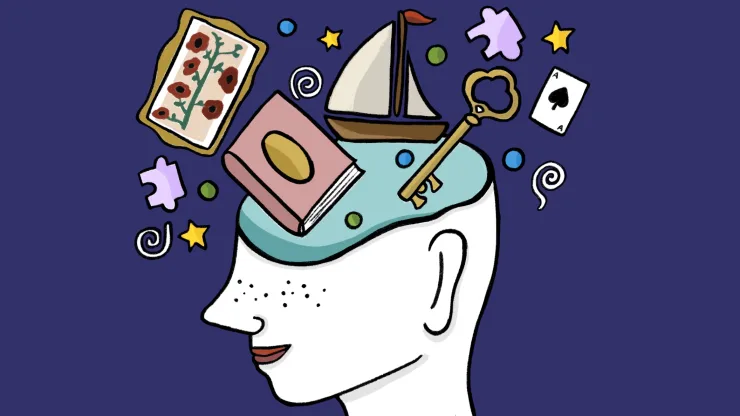
Like any other part of your body, your brain needs daily exercise. Neglecting your brain health can make you vulnerable to degenerative brain diseases like Alzheimer’s and other forms of dementia .
As a neuroscientist , I’ve spent decades guiding patients with memory problems through brain-enhancing habits and exercises — many of which I practice, too.
Here are seven hard rules I follow to keep my brain and memory sharp as a whip at 81 years old: 1. Choose fiction when you can.
You can learn a lot from non-fiction works, but they are often organized in ways that allow you to skip around based on personal interests and previous familiarity with the subject.
Fiction, on the other hand, requires you to exercise your memory, as you proceed from beginning to end and retain a variety of details, characters and plots.
Incidentally, I’ve noticed over my years as a neuropsychiatrist that people with early dementia, as one of the first signs of the encroaching illness, often stop reading novels. 2. Never leave an art museum without testing your memory.
“Western Motel” by Edward Hopper 1957. Oil on canvas, 30 1/4 x 50 1/8 inches (77.8 x 128.3 cm). Located in the Yale University Art Gallery, New Haven, Connecticut, USA. (Photo by VCG Wilson/Corbis via Getty Images)
Fine Art | Getty
My favorite painting to do visualization exercises with is Edward Hopper’s “Western Motel,” which depicts a woman sitting in a sunlit motel bedroom.
Start by intently studying the details until you can see them in your mind’s eye. Then describe the painting while looking away from it.
Illustration: Olivia de Recat for CNBC Make It
Did you include the tiny clock on the bedside table? The gooseneck lamp? The piece of clothing on the chair at the lower right of the painting? Can you recall the colors and the composition of the room?
You can do this with any piece of art to boost your memory. 3. Keep naps under 90 minutes.
Naps lasting anywhere from 30 minutes to an hour and a half, between 1:00 p.m. to 4:00 p.m., have been shown to increase later recall for information encoded prior to the nap.
Several studies have also found that naps can compensate for poor sleep at night. If you struggle with insomnia, a mid-afternoon nap can boost memory performance .
Over the years, I’ve trained myself to nap for exactly half an hour. Some people I know have learned to nap for only 15 minutes, and then wake up refreshed and reinvigorated. 4. No party is complete without brain games.
My favorite activity is “20 Questions,” where one person (the questioner) leaves the room and the remaining players select a person, place or thing. The questioner can ask up to 20 questions to guess what the group decided.
Success depends on the questioner’s ability to keep clearly in mind all of the answers and mentally eliminating possible choices on the basis of the answers.
Bridge and chess are also great for exercising your memory: In order to do well, you have to evaluate previous games, while also considering the future consequences of your decisions in the past and present. 5. Eat brain foods.
Dr. Uma Naidoo , a nutritional psychiatrist at Harvard Medical School, has a great acronym for a BRAIN FOODS : B : Berries and beans
R : Rainbow colors of fruits and vegetables
A : Antioxidants
I : Include lean proteins and plant-based proteins
N : Nuts
F : Fiber-rich foods and fermented foods
O : Oils O : Omega-rich foods D : Dairy S : Spices And good news for chocoholics (like me): A 2020 study found that cocoa flavonoids, the ingredients in dark chocolate, can enhance episodic memory in healthy young adults. 6. Use images for hard-to-remember things. My wife’s dog, Leah, is a Schipperke (pronounced “SKIP-er-kee”). It is a distinctive name, but I’d have the hardest time remembering it. So to finally be able to answer “What kind of breed is that?” at the dog park, I formed the image of a small sailboat (small dog) with a burly skipper holding a huge key.Get in the habit of converting anything which you find hard to remember into a wild, bizarre or otherwise attention grabbing image. 7. Don’t sit on the couch all day. One recent study of 82,872 volunteers found that participants 80 years or older who engaged in moderate to high level of physical activity were at lower risk for dementia, compared with inactive adults aged 50 to 69 years.Even just a shift from sedentary non-activity (prolonged sitting, a “never walk when you can drive” attitude), to active movement (standing, climbing stairs, walking a mile daily) made a difference.Housework has also been linked to higher attention and memory scores and better sensory and motor function in older adults. Dr. Richard Restak , MD, is a neuroscientist and author of 20 books on the human brain, including “The Complete Guide to Memory: The Science of Strengthening Your Mind” and “Think Smart: A Neuroscientist’s Prescription for Improving Your Brain’s Performance.” Currently, he is the Clinical Professor of Neurology at George Washington Hospital University School of Medicine and Health Sciences. In 1992, Dr. Restak was a recipient of The Chicago Neurosurgical Center’s “Decade Of The Brain Award.” Don’t miss: Brain expert: The No. 1 thing that sets ‘SuperAgers’ apart from people with ‘weak memory skills’ A Harvard nutritionist and brain expert avoids these 5 foods that ‘weaken memory and focus’ MIT neuroscientist shares 4 things she never does to eliminate ‘brain fog and forgetfulness’ 5 toxic brain foods to avoid, according to a Harvard nutritionist VIDEO2:4302:435 toxic brain foods to avoid, according to a Harvard nutritionist Health and Wellness Sign up now: Get smarter about your money and career with our weekly newsletter
How to Tell If Your Brain Needs a Break
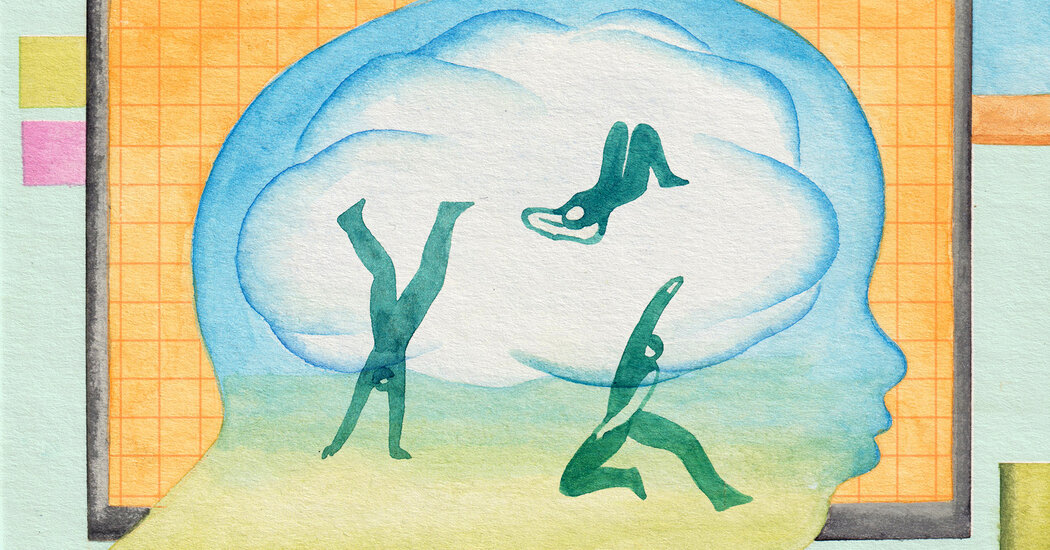
Taking a few minutes to do a puzzle — or stare into space — can allow you to return to work sharper and more creative. Monica Ramos It’s 1:02 p.m. Do you know what your brain is doing?
If the answer is trawling the bowels of the internet instead of finishing those spreadsheets, it might be time to step away from your desk. Brain slumps are real, said Gloria Mark, a professor of informatics at the University of California, Irvine. And the antidote to this midafternoon mind sludge isn’t muddling through, no matter what hustle culture wants you to believe. It’s the opposite: You should take a break.
“We can’t expect to lift weights nonstop all day, and we can’t expect to use sustained focus and attention for extended periods of time, either,” said Dr. Mark, author of “Attention Span: A Groundbreaking Way to Restore Balance, Happiness and Productivity.” While your brain is not a muscle, the analogy is a good one, since staying focused requires our brains to burn energy, said Marta Sabariego, an assistant professor at Mount Holyoke College who studies attention and other goal directed behaviors.
But the most compelling reason for taking a brain break is that it may improve your ability to do quality work. A 2022 systematic review published in the journal PLoS ONE found that even short breaks lasting 10 minutes or less reduced mental fatigue and increased vigor (meaning the willingness to persist when work became difficult).
These breaks especially improved performance on tasks requiring creativity and less so for activities like basic arithmetic.
The analysis found that the longer the break, the better the performance boost. Since few of us can take unlimited breaks, the trick is to use the time you have wisely — even if that means ignoring your boss’s dirty look as you fiddle with a Rubik’s Cube. How We Focus (or Don’t)
Paying attention isn’t so much an action as a way of processing information, Dr. Sabariego said. When we’re focused, our brains’ “task-related networks” filter out distractions, from the smell of fish in the office microwave to a co-worker’s incessant pen tapping.
When we’re unfocused, our brains switch to the default mode network, said Dr. Srini Pillay, a psychiatrist and the author of “Tinker Dabble Doodle Try.” He sometimes jokingly calls this the “do mostly nothing” system, because it’s active when we’re daydreaming.
In most people’s brains, “when one is working, the other one is off,” Dr. Sabariego said. The task-related network is great for checking items off your to-do list, but usually just one at a time. Problem-solving and innovation usually require letting your mind wander in order to brainstorm possible solutions using the default mode network.
“The default mode network can actually retrieve details from the nooks and crannies in your brain’s memories that the logical brain cannot retrieve,” Dr. Pillay said, “which is why sometimes people say they have their best ideas in the shower.”
For creative thinking, we need to give our thoughts room to roam — ideally by taking a break. Timing Is Everything
The urge to check Instagram every two minutes is more universal than you might think. Dr. Mark has been studying how knowledge workers (most employees who sit at computers all day) spend their time during the work day since the early 2000s. Her research involves tracking how often workers switch between tabs on their computers — from email to spreadsheets to chat apps and back again.
In 2012, Dr. Mark did a study on 13 such workers and found that the average time they spent on one screen or tab — be it a work-related program or social media — was 75 seconds. As her research went on over the years, “it started declining,” she said. In 2020, one of Dr. Mark’s graduate students tracked 50 workers and found that the average time spent on one tab was 44 seconds.
The problem is that “you can only consciously think about one or two things at a time,” said Johann Hari, the author of “Stolen Focus: Why You Can’t Pay Attention — and How to Think Deeply Again.” “That’s a fundamental limitation of the human brain.”
“Multitasking — or toggling between spreadsheets and email — can increase mistakes, reduce creativity and cause fatigue,” Mr. Hari added. If your job requires you to multitask, chances are you’ll need to take a break more often.
How often? Everyone’s brain works differently, so there isn’t a hard and fast rule, Dr. Sabariego said. It also depends on what you’re doing. You may stay focused for 90 minutes or more doing work you find challenging and rewarding, she said.
Menial or boring tasks don’t produce the dopamine reward we get when we engage with something interesting. “Dopamine helps us narrow our visual and auditory world and increases our motivation,” Dr. Sabariego said, so you may need more frequent breaks when doing these sorts of tasks.
You can also build focus over time, she added. If you need a break every 30 minutes, try setting a timer and staying on task for 32, 35, then 40 minutes to help you space your breaks further apart. Don’t Quit Too Soon
One thing to note: The popular Pomodoro Technique , which involves working for 25 minutes before taking a three- to five-minute break, is more of a method for fighting procrastination than optimizing deep focus. It takes time to get back to work after an interruption, Mr. Hari said. If your timer goes off but you’re still in the zone, keep going.
Consider your own circadian rhythms before arbitrarily setting a timer. Many people have peaks in their ability to pay attention around 11 a.m. and 3 p.m., with things often dropping off after lunch, Dr. Mark said. You may be able to focus for longer in the morning, but need more frequent breaks later in the day. Break Your Sedentary Ways
Heading out into nature for some sort of physical activity is one of the best ways to give your brain a break, Dr. Mark said. She worked on […]
New Study Finds the Best Brain Exercises to Boost Memory

Research has found exercise can have a positive impact on your memory and brain health.
A new study linked vigorous exercise to improved memory, planning, and organization.
Data suggests just 10 minutes a day can have a big impact.
Experts have known for years about the physical benefits of exercise, but research has been ongoing into how working out can impact your mind. Now, a new study reveals the best exercise for brain health—and it can help sharpen everything from your memory to your ability to get organized.
The study, which was published in the Journal of Epidemiology & Community Health , tracked data from nearly 4,500 people in the UK who had activity monitors strapped to their thighs for 24 hours a day over the course of a week. Researchers analyzed how their activity levels impacted their short-term memory, problem-solving skills, and ability to process things.
The study found that doing moderate and vigorous exercise and activities—even those that were done in under 10 minutes—were linked to much higher cognition scores than people who spent most of their time sitting, sleeping, or doing gentle activities. ( Vigorous exercise generally includes things like running, swimming, biking up an incline, and dancing; moderate exercise includes brisk walking and anything that gets your heart beating faster.)
The researchers specifically found that people who did these workouts had better working memory (the small amount of information that can be held in your mind and used in the execution of cognitive tasks) and that the biggest impact was on executive processes like planning and organization.
On the flip side: People who spent more time sleeping, sitting, or only moved a little in place of doing moderate to vigorous exercise had a 1% to 2% drop in cognition.
“Efforts should be made to preserve moderate and vigorous physical activity time, or reinforce it in place of other behaviors,” the researchers wrote in the conclusion.
But the study wasn’t perfect—it used previously collected cohort data, so the researchers didn’t know extensive details of the participants’ health or their long-term cognitive health. The findings “may simply be that those individuals who move more tend to have higher cognition on average,” says lead study author John Mitchell, a doctoral training student in the Institute of Sport, Exercise & Health at University College London. But, he adds, the findings could also “imply that even minimal changes to our daily lives can have downstream consequences for our cognition.”
So, why might there be a link between exercise and a good memory? Here’s what you need to know. Why might exercise sharpen your memory and thinking?
This isn’t the first study to find a link between exercise and enhanced cognition. In fact, the Centers for Disease Control and Prevention (CDC) specifically states online that physical activity can help improve your cognitive health, improving memory, emotional balance, and problem-solving.
Working out regularly can also lower your risk of cognitive decline and dementia. One scientific analysis of 128,925 people published in the journal Preventive Medicine in 2020 found that cognitive decline is almost twice as likely in adults who are inactive vs. their more active counterparts.
But, the “why” behind it all is “not entirely clear,” says Ryan Glatt, C.P.T. , senior brain health coach and director of the FitBrain Program at Pacific Neuroscience Institute in Santa Monica, CA. However, Glatt says, previous research suggests that “it is possible that different levels of activity may affect brain blood flow and cognition.” Meaning, exercising at a harder clip can stimulate blood flow to your brain and enhance your ability to think well in the process.
“It could relate to a variety of factors related to brain growth and skeletal muscle,” says Steven K. Malin, Ph.D., associate professor in the Department of Kinesiology and Health at Rutgers Robert Wood Johnson Medical School. “Often, studies show the more aerobically fit individuals are, the more dense brain tissue is, suggesting better connectivity of tissue and health.”
Exercise also activates skeletal muscles (the muscles that connect to your bones) that are thought to release hormones that communicate with your brain to influence the health and function of your neurons, i.e. cells that act as information messengers, Malin says. “This could, in turn, promote growth and regeneration of brain cells that assist with memory and cognition,” he says.
Currently, the CDC recommends that most adults get at least 150 minutes a week of moderate-intensity exercise. The best exercises for your memory
Overall, the CDC suggests doing the following to squeeze more exercise into your life to enhance your brain health: Dance
Do squats or march in place while watching TV
Start a walking routine
Use the stairs
Walk your dog, if you have one ( one study found that dog owners walk, on average, 22 minutes more every day than people who don’t own dogs)
However, the latest study suggests that more vigorous activities are really what’s best for your brain. The study didn’t pinpoint which exercises, in particular, are best— “when wearing an accelerometer, we do not know what sorts of activities individuals are doing,” Glatt points out. However, getting your heart rate up is key.
That can include doing exercises like: Running
Jogging
Swimming Biking on an incline Dancing Malin’s advice: “Take breaks in sitting throughout the day by doing activity ‘snacks.’” That could mean doing a minute or two of jumping jacks, climbing stairs at a brisk pace, or doing air squats or push-ups to try to replace about six to 10 minutes of sedentary behavior a day. “Alternatively, trying to get walks in for about 10 minutes could go a long way,” he says.Try 200+ at home workout videos from Men’s Health, Women’s Health, Prevention, and more on All Out Studio free for 14 days!
17 RD-Approved ‘Brain Snacks’ That’ll Help Boost Your Memory and Focus (That You Can Find on Amazon)
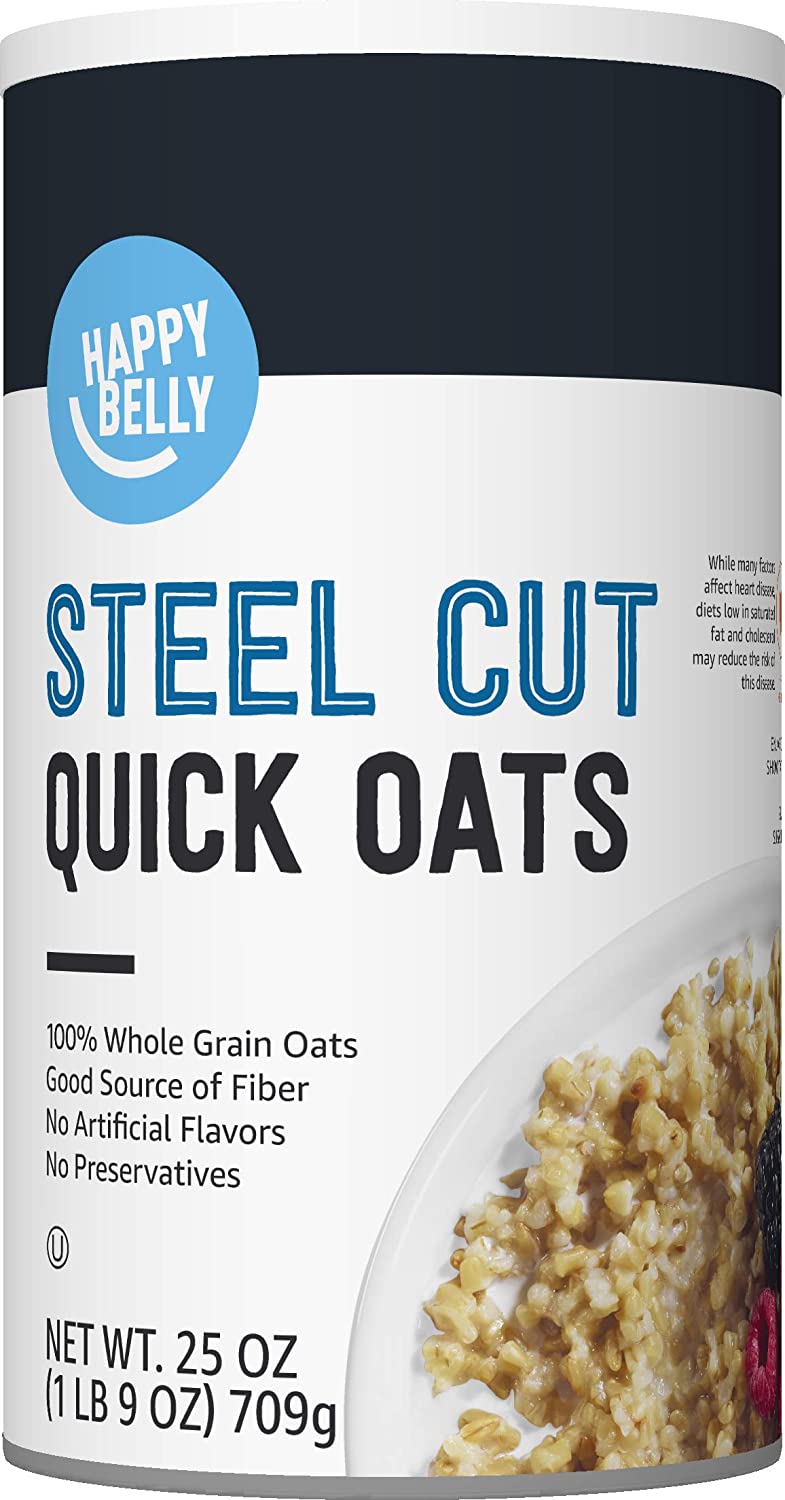
et’s set the scene: You’ve barely made it past lunchtime without nodding off at least 15 times at your desk, but your Slack DMs are blowing up with messages from your coworkers about an EOD deadline you need to meet. Stress-induced panic commencing in 3, 2, 1.
Naturally, when we can’t seem to keep our eyelids open no matter how hard we try, our first instinct is to crank on our fave coffee machine and brew up an extra-large latte. However, as much as we can’t live without coffee, another serving of jitter-inducing java might be the last thing we need. Registered dietitian Sarah Maver, MPH, RD , director of wellness and sustainability at Chartwells K12, agrees—and adds that it’s smarter to snack on something that’ll help you feel energized and focused rather than just defaulting to caffeine.
Here, Maver shares the five best types of brain-boosting snacks that can help with concentration and cognitive functioning to keep top of mind (ha!) and pantry. Plus, the exact products you can find in her shopping cart that are available on Amazon. 5 best types of brain-boosting snacks, according to a registered dietitian
1. Oats
Aside from a great breakfast option, oats are also an ideal brain-boosting snack to eat throughout the day. “Whole grains like oats are packed with complex carbohydrates, B vitamins, and fiber. These nutrients provide a steady release of energy for our brain, which can help with memory and concentration,” Maver says.
One of her favorite ways to eat hearty oats is by topping a bowl of oatmeal with nuts and berries for an extra boost of protein and antioxidants. Fortunately, oats are a great source of essential nutrients that ensure you get the most bang for your buck.
And if you’re wondering what’s in Maver’s shopping cart, these are the four options she likes the most, which range from 100 percent whole-grain oats to heart-healthy organic quick oats to steel-cut oats with about four grams of fiber per quarter-cup serving. Photo: Amazon Photo: Amazon Photo: Amazon Photo: Amazon 2. Nuts
Feel like you’re constantly asking Siri to remind you of your daily to-do list, and your memory could use a little boost? A handful of nuts (and, you know, a stack of Post-It Notes) might be all you need. “Nuts such as walnuts are a great snack that can help improve memory. They are a super source of antioxidants, vitamin E, and healthy fats like omega-3 fatty acids, which support brain health,” Maver says.
Though many types of healthy nut options (like almonds) can help slow memory loss for those with chronic illnesses like Alzheimer’s disease, Maver adds that she gravitates towards walnuts ( pro tip: store them in the fridge to prevent your nuts from going rancid ). Photo: Amazon Photo: Amazon Photo: Amazon Photo: Amazon 3. Salmon
ICYMI, we recently predicted that the tinned fish market would make a big splash in 2023, and the trend already shows no signs of stopping. That’s because canned seafood is convenient, heart-healthy, and sustainable—not to mention the fact that it’s one of Maver’s top brain-boosting foods.
“Salmon is a fatty fish that’s an excellent source of omega-3 fatty acids, which are beneficial for brain health. The omega-3 fatty acids in fish like salmon support brain growth, can help boost memory, and have been shown to slow age-related cognitive decline,” Maver says. Photo: Amazon Photo: Amazon Photo: Amazon 4. Berries
Looking for something sweet? Maver recommends eating berries to satisfy your sweet tooth while boosting your brain health. “Colorful berries like blueberries contain helpful plant compounds called anthocyanins, which have anti-inflammatory and antioxidant effects that support brain health and improve memory and concentration,” she says.
An easy way to incorporate berries into a snack, especially if you’re busy working, is by blending it into a smoothie, like this Blue Zone-inspired blueberry smoothie . Or, you can also opt for dried versions to add on top of salads or turn it into a DIY trail mix to snack on throughout the day. Photo: Amazon Photo: Amazon Photo: Amazon 5. Chickpeas
One way Maver likes to stay focused is by consuming plenty of fiber throughout the day. “Chickpeas and other beans provide fiber, helping you feel fuller longer after eating and boosting concentration. Packed with nutrients like vitamins, omega fatty acids, and fiber that support brain health, roasted chickpeas also make a great crunchy snack,” she says. Photo: Amazon Photo: Amazon Photo: Amazon Cheers to this brain-boosting herbal shot for longevity:
These 7 herbs can help you through life’s aches and pains
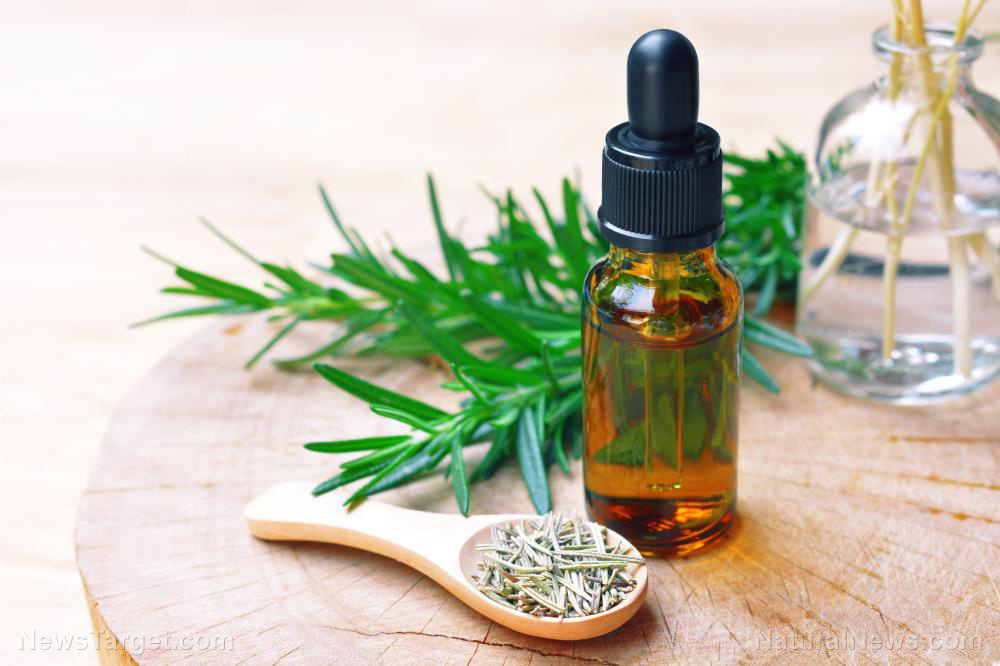
( Natural News ) Manage your pain naturally without relying on over-the-counter pain medications with these seven natural pain relievers: Boswellia ( Boswellia serrata )
Boswellic acids are the active constituents of Boswellia, an ayurvedic herb found from the resin of the plant, according to a study published in the journal Evidence-based Complementary and Alternative Medicine .
Many clinical studies, including one published in the journal BMC Complementary Medicine and Therapies , have found that Boswellia and its extracts are safe and effective treatment options for patients diagnosed with osteoarthritis and rheumatoid arthritis. Boswellia extracts can help alleviate pain, reduce swelling and improve knee-joint functions within seven days. Chili peppers ( Capsicum frutenscens )
A study published in the British Journal of Anesthesia noted that many topical creams, lotions and patches used to relieve pain contain capsaicin , which is present in chili peppers . Researchers indicated that three to five topical skin applications of it per day for two to six weeks showed beneficial effects against various pain syndromes, including post-herpetic neuralgia, diabetic neuropathy and chronic musculoskeletal pain. (Related: 80 percent of the world’s population still relies on ancient medicine made from plants and botanicals .) Cloves ( Syzygium aromaticum )
Eugenol, also called clove oil, the main bioactive compound of clove , has been widely used for its anesthetic and analgesic action in dentistry. A study published in the journal Natural Product Communications reported that in addition to analgesic and local anesthetic activity, eugenol possesses significant antioxidant, anti-inflammatory and cardiovascular properties.
Researchers in a study published in the Journal of Dentistry found clove gel to be as effective as benzocaine gel that dentists often use to reduce needle pain. They also concluded that even homemade clove gel has the potential to replace benzocaine as a topical agent before needle insertions. Devil’s claw ( Harpagophytum procumbens )
Devil’s claw, a traditional South African herbal remedy, contains iridoid glycosides, including harpagoside, which has been proven safe and effective in reducing pain and inflammation from fibrositis, gout, lumbago, myalgia, osteoarthritis, pleuritic chest pain, rheumatoid arthritis and tendonitis since the 1900s.
A study published in the Journal of Alternative and Complementary Medicine indicated that devil’s claw is a rich source of anti-inflammatory activity and is a safer option than the use of nonsteroidal anti-inflammatory drugs , whose adverse effects are well documented. Feverfew ( Tanacetum parthenium L.)
The flowers and the leaves of the feverfew herb, also called medieval aspirin, contains sesquiterpene lactones, including parthenolide, and other active constituents, such as flavonoid glycosides and pinenes.
Also known as feather few or bachelor’s buttons, this medicinal plant is used in traditional and folk medicine to relieve full-body aches and pains associated with fever, migraine headaches, toothaches, stomach aches and long-lasting or chronic pain from rheumatoid arthritis. A study published in the journal Pharmacognosy Review concludes that feverfew flowers and leaves have analgesics or pain-relieving properties. Rosemary ( Salvia rosmarinus )
Researchers in a study published in Addiction and Health suggested that rosemary acts on receptors in the brain called opioid receptors , which are involved with the sensation of pain. You can benefit from rosemary’s medicinally and pharmacologically active components, such as rosmarinic acid, carnosic acid and essential oil, by massaging the oil on the affected area. Mix one teaspoon of carrier oil (like jojoba oil) with five drops of rosemary essential oil to create an effective salve. (Related: Discover the many health benefits of the herbal spices rosemary and thyme .) White willow ( Salix alba )
Greek physicians from centuries ago used white willow bark as a natural remedy for pain associated with inflammation, particularly low back pain and osteoarthritis, headaches and other inflammatory conditions, such as bursitis and tendinitis.
White willow bark contains an aspirin-like compound known as salicin and other salicylates, as well as polyphenols, which is responsible for the pain-relieving and anti-inflammatory effects of the herb in combination with its powerful anti-inflammatory plant compounds called flavonoids.
Herbs have an important place in any prepper’s medicine cabinet, obviously with your doctor’s approval. Always consult your doctor or a naturopath who’s an herbal specialist before trying more herbs for your pain management toolbox.
Read more stories about natural medicine at AlternativeMedicine.news .
Watch this video about 20 must-have herbs for first aid . No compatible source was found for this media. More related stories:
The cabbage tree relieves pain and inflammation without any of the side effects caused by conventional drugs .
Sources include:
BioMedCentral.com
PubMed.NCBI.NLM.NIH.gov 1
ScienceDirect.com
LiebertPub.com
PhcogRev.com
PubMed.NCBI.NLM.NIH.gov 2
Brighteon.com
Tuning into brainwave rhythms speeds up learning in adults, study finds
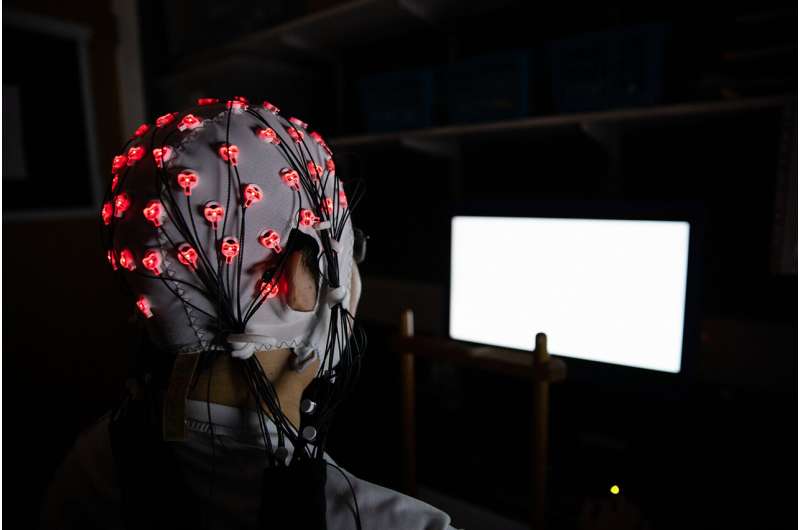
The brainwaves experiment set-up in the Adaptive Brain Lab, led by Prof Zoe Kourtzi, in the University of Cambridge’s Department of Psychology. Credit: University of Cambridge Scientists have shown for the first time that briefly tuning into a person’s individual brainwave cycle before they perform a learning task dramatically boosts the speed at which cognitive skills improve.
Calibrating rates of information delivery to match the natural tempo of our brains increases our capacity to absorb and adapt to new information, according to the team behind the study.
University of Cambridge researchers say that these techniques could help us retain “neuroplasticity” much later in life and advance lifelong learning.
“Each brain has its own natural rhythm, generated by the oscillation of neurons working together,” said Prof Zoe Kourtzi, senior author of the study from Cambridge’s Department of Psychology. “We simulated these fluctuations so the brain is in tune with itself—and in the best state to flourish.”
“Our brain’s plasticity is the ability to restructure and learn new things, continually building on previous patterns of neuronal interactions. By harnessing brainwave rhythms, it may be possible to enhance flexible learning across the lifespan, from infancy to older adulthood,” Kourtzi said.
The findings, published in the journal Cerebral Cortex , will be explored as part of the Center for Lifelong Learning and Individualized Cognition: a research collaboration between Cambridge and Nanyang Technological University (NTU), Singapore.
The neuroscientists used electroencephalography—or EEG—sensors attached to the head to measure electrical activity in the brain of 80 study participants, and sample brainwave rhythms.
The team took alpha waves readings. The mid-range of the brainwave spectrum, this wave frequency tends to dominate when we are awake and relaxed.
Alpha waves oscillate between eight to twelve hertz: a full cycle every 85-125 milliseconds. However, every person has their own peak alpha frequency within that range. An EEG cap used in the brainwaves experiment run by the Adaptive Brain Lab, led by Prof Zoe Kourtzi, in the University of Cambridge’s Department of Psychology. Credit: University of Cambridge Scientists used these readings to create an optical “pulse”: a white square flickering on a dark background at the same tempo as each person’s individual alpha wave.
Participants got a 1.5-second dose of personalized pulse to set their brain working at its natural rhythm—a technique called “entrainment”—before being presented with a tricky quick-fire cognitive task: trying to identify specific shapes within a barrage of visual clutter.
A brainwave cycle consists of a peak and trough. Some participants received pulses matching the peak of their waves, some the trough, while some got rhythms that were either random or at the wrong rate (a little faster or slower). Each participant repeated over 800 variations of the cognitive task, and the neuroscientists measured how quickly people improved.
The learning rate for those locked into the right rhythm was at least three times faster than for all the other groups. When participants returned the next day to complete another round of tasks, those who learned much faster under entrainment had maintained their higher performance level.
“It was exciting to uncover the specific conditions you need to get this impressive boost in learning,” said first author Dr. Elizabeth Michael, now at Cambridge’s Cognition and Brain Sciences Unit.
“The intervention itself is very simple, just a brief flicker on a screen, but when we hit the right frequency plus the right phase alignment, it seems to have a strong and lasting effect.”
Importantly, entrainment pulses need to chime with the trough of a brainwave. Scientists believe this is the point in a cycle when neurons are in a state of “high receptivity”.
“We feel as if we constantly attend to the world, but in fact our brains take rapid snapshots and then our neurons communicate with each other to string the information together,” said co-author Prof Victoria Leong, from NTU and Cambridge’s Department of Pediatrics.
“Our hypothesis is that by matching information delivery to the optimal phase of a brainwave, we maximize information capture because this is when our neurons are at the height of excitability.” The brain activity over time of a study participant, recorded at several different locations on the scalp by the EEG cap as part of the experiment. Credit: University of Cambridge Previous work from Leong’s Baby-LINC lab shows that brainwaves of mothers and babies will synchronize when they communicate. Leong believes the mechanism in this latest study is so effective because it mirrors the way we learn as infants.
“We are tapping into a mechanism that allows our brain to align to temporal stimuli in our environment, especially communicative cues like speech, gaze and gesture that are naturally exchanged during interactions between parents and babies,” said Leong.
“When adults speak to young children they adopt child-directed speech—a slow and exaggerated form of speaking. This study suggests that child-directed speech may be a spontaneous way of rate-matching and entraining the slower brainwaves of children to support learning.”
The researchers say that, while the new study tested visual perception , these mechanisms are likely to be “domain general”: applying to a wide range of tasks and situations, including auditory learning.
They argue that potential applications for brainwave entrainment may sound like the stuff of science fiction, but are increasingly achievable. “While our study used complex EEG machines, there are now simple headband systems that allow you to gauge brain frequencies quite easily,” said Kourtzi.
“Children now do so much of their learning in front of screens. One can imagine using brainwave rhythms to enhance aspects of learning for children who struggle in regular classrooms, perhaps due to attentional deficits.”
Other early applications of brainwave entrainment to boost learning could involve training in professions where fast learning and quick decision-making is vital, such as pilots or surgeons. “Virtual reality simulations are now an effective part of training in many professions,” said Kourtzi.
“Implementing pulses that sync with brainwaves in these virtual environments could give new learners an edge, or help those retraining later in life.”
Provided by University of Cambridge
Traffic pollution can impair brain function: study

Typical levels of traffic pollution can impair human brain function in a matter of hours, a new study has found.
Just two hours of exposure to diesel exhaust causes a plunge in the brain’s functional connectivity — a measure of how different areas of the brain communicate with each other, according to the study published in Environmental Health on Tuesday.
“For many decades, scientists thought the brain may be protected from the harmful effects of air pollution,” senior author Chris Carlsten, head of respiratory medicine at the University of British Columbia, said in a statement .
“This study, which is the first of its kind in the world, provides fresh evidence supporting a connection between air pollution and cognition,” Carlsten added.
To draw these conclusions, the Canadian research team briefly exposed 25 healthy adults to diesel exhaust and filtered air at different times in a laboratory setting.
The scientists said they measured brain activity before and after each exposure using functional magnetic resonance imaging (fMRI).
They then analyzed changes in the brain’s “default mode network” — a set of interconnected brain regions that contribute to memory and internal thought.
The fMRI results demonstrated that participants experienced decreased functional connectivity in the default mode network after exposure to diesel exhaust, in comparison to filtered air, according to the study.
“People may want to think twice the next time they’re stuck in traffic with the windows rolled down,” Carlsten said.
“It’s important to ensure that your car’s air filter is in good working order, and if you’re walking or biking down a busy street, consider diverting to a less busy route,” he added.
Welcome to Equilibrium , a newsletter that tracks the growing global battle over the future of sustainability. We’re Saul Elbein and Sharon Udasin . Subscribe here .
Today we’ll start in the western United States, which is still battling drought despite recent rains. Then we’ll see how Texas could benefit from a nascent geothermal industry, as well as how Europe is turning to Africa for fossil fuel resources.
Subscribe to more newsletters
A series of storms that pummeled the U.S. West recently to local reservoirs, but federal meteorologists warned on Tuesday that long-term drought still plagues the region.
Nine storm systems known as “atmospheric rivers” began inundating the West over a three-week period starting in late December, according to from the National Integrated Drought Information System (NIDIS).
Heather Boushey, a member of the President’s Council of Economic Advisers, sits down with The Hill’s Sylvan Lane for a live newsmaker event. The state’s flagship universities collaborated with the (IEA) to produce the landmark report.
For more on how Texas can begin its geothermal buildout, please click
The U.S. Forest Service will spend nearly half a billion dollars to help bolster against destructive fire, the U.S. Department of Agriculture (USDA) announced last week. “It is no longer a matter of ‘if’ a wildfire will threaten many western communities in these landscapes, Agriculture Secretary Tom Vilsack said in a statement.
The work builds on the sweeping the department announced earlier this month.
With last year’s announced fuel treatments , the USDA has committed to invest $930 million across 45 million acres.
The number of energy deals signed by the EU and by European nations with third-party countries has recently surged, according to , published by the Liechtenstein-based Geopolitical Intelligence Services. This trade tension stems from a potential flight of to the U.S. — lured by green subsidies available through the Biden administration’s Inflation Reduction Act, as we reported.
Italian Prime Minister Giorgia Meloni praised Algeria on Monday as Rome’s “” partner in North Africa at the end of a two-day visit to the country, France24 reported. The Bulletin of the Atomic Scientists warned on Tuesday that humanity was our colleague Laura Kelly reported. The Bulletin celebrated this grim milestone by advancing its Doomsday Clock — which measures the scale of existential threats facing humanity — to 90 seconds to midnight.
Environmental advocates are expressing frustration with the Biden administration at what they describe as , our colleague Rachel Frazin reported. Their discontent comes after the administration’s release of its semiannual , which pushed back timelines for a variety of pollution and fossil fuel-related rules.
The recent death of an endangered vulture at the Dallas Zoo at the zoo this month, The Wall Street Journal reported. On Jan. 13, a clouded leopard went temporarily missing after its enclosure was deliberately cut open — creating a tear similar to one found the same day in a monkey enclosure.
Please visit The Hill’s online for more and . We’ll see you tomorrow.
New Study Finds the Best Brain Exercises to Boost Memory

New Study Finds the Best Brain Exercises to Boost Memory Research has found exercise can have a positive impact on your memory and brain health.
A new study linked vigorous exercise to improved memory, planning, and organization.
Data suggests just 10 minutes a day can have a big impact.
Experts have known for years about the physical benefits of exercise, but research has been ongoing into how working out can impact your mind. Now, a new study reveals the best exercise for brain health—and it can help sharpen everything from your memory to your ability to get organized.
The study, which was published in the Journal of Epidemiology & Community Health , tracked data from nearly 4,500 people in the UK who had activity monitors strapped to their thighs for 24 hours a day over the course of a week. Researchers analyzed how their activity levels impacted their short-term memory, problem-solving skills, and ability to process things.
The study found that doing moderate and vigorous exercise and activities—even those that were done in under 10 minutes—were linked to much higher cognition scores than people who spent most of their time sitting, sleeping, or doing gentle activities. ( Vigorous exercise generally includes things like running, swimming, biking up an incline, and dancing; moderate exercise includes brisk walking and anything that gets your heart beating faster.)
The researchers specifically found that people who did these workouts had better working memory (the small amount of information that can be held in your mind and used in the execution of cognitive tasks) and that the biggest impact was on executive processes like planning and organization.
On the flip side: People who spent more time sleeping, sitting, or only moved a little in place of doing moderate to vigorous exercise had a 1% to 2% drop in cognition.
“Efforts should be made to preserve moderate and vigorous physical activity time, or reinforce it in place of other behaviors,” the researchers wrote in the conclusion.
This isn’t the first study to find a link between exercise and enhanced cognition. In fact, the (CDC) specifically states online that physical activity can help improve your cognitive health, improving memory, emotional balance, and problem-solving.
Working out regularly can also lower your risk of cognitive decline and dementia. One scientific analysis of 128,925 people published in the journal in 2020 found that cognitive decline is almost twice as likely in adults who are inactive vs. their more active counterparts.
But, the “why” behind it all is “not entirely clear,” says , senior brain health coach and director of the FitBrain Program at Pacific Neuroscience Institute in Santa Monica, CA. However, Glatt says, previous research suggests that “it is possible that different levels of activity may affect brain blood flow and cognition.” Meaning, exercising at a harder clip can stimulate blood flow to your brain and enhance your ability to think well in the process.
Currently, the CDC that most adults get at least 150 minutes a week of moderate-intensity exercise. Walk your dog, if you have one ( found that dog owners walk, on average, 22 minutes more every day than people who don’t own dogs)
Study shows that orienteering can train brain, aid in prevention of cognitive decline
People who participate in orienteering reported better spatial navigation and memory, suggesting that adding elements of wayfinding into regular workouts could be beneficial over the span of a lifetime.
Orienteering, a sport that requires athleticism, navigational abilities, and memory, may be effective as an intervention or preventive approach to battle cognitive loss associated with dementia, according to new research.
The physical and cognitive demands of orienteering, which combines exercise and navigation, were hypothesised to stimulate parts of the brain that our ancestors used for hunting and gathering. Thousands of years ago, the brain evolved to adapt to its harsh environment by creating new neural pathways.
Those same brain functions are not as necessary for survival today due to modern conveniences such as GPS apps and readily available food. Researchers suggest it is a case of “use it or lose it.”
“Modern life may lack the specific cognitive and physical challenges the brain needs to thrive,” says Jennifer Heisz, Canada Research Chair in Brain Health and Aging at McMaster University, who supervised the research. “In the absence of active navigation, we risk losing that neural architecture.”
Heisz points to Alzheimer’s disease, in which losing the ability to find one’s way is among the earliest symptoms, affecting half of all afflicted individuals, even in the mildest stage of the disease.
In the study, published today in the journal PLoS ONE, researchers surveyed healthy adults, ranging in age from 18 to 87 with varying degrees of orienteering expertise (none, intermediate, advanced and elite).
People who participate in orienteering reported better spatial navigation and memory, suggesting that adding elements of wayfinding into regular workouts could be beneficial over the span of a lifetime.
“When it comes to brain training, the physical and cognitive demands of orienteering have the potential to give you more bang for your buck compared to exercising only,” says lead author Emma Waddington, a grad student in the Department of Kinesiology who designed the study and is a coach and member of the national orienteering team.
The goal of orienteering is to navigate by running as quickly as possible over unfamiliar territory, finding a series of checkpoints using only a map and compass. The most skillful athletes must efficiently switch between several mental tasks, making quick decisions while moving across the terrain at a rapid pace.
The sport is unique because it requires active navigation while making quick transitions between parts of the brain that process spatial information in different ways. For example, reading a map depends on a third-person perspective relative to the environment.
Orienteers must quickly translate that information relative to their own positions within the environment, in real-time, as they run the course.
It is a skill which GPS systems have engineered out of modern life, say researchers. That may affect not only our ability to navigate but also affect our spatial processing and memory more generally because these cognitive functions rely on overlapping neural structures.
Researchers suggest there are two simple ways to incorporate more orienteering into daily life: turn off the GPS and use a map to find your way when travelling and challenge yourself — spatially — by using a new route for your run, walk or bike ride.
“Orienteering is very much a sport for life. You can often see participants spanning the ages of 6 to 86 years old engaged in orienteering,” says Waddington.
“My long-term involvement in this sport has allowed me to understand the process behind learning navigational skills and I have been inspired to research the uniqueness of orienteering and the scientific significance this sport may have on the aging population,” Waddington added.
Asia News International
Bugs on the Brain – Gut Microbes Affect Neurodegeneration
The human gut microbiome exerts a significant influence on many aspects of our physiology. While it may not be surprising that gut microbes can affect gut health, studies have also suggested that the gut microbiome can play a role in neurodegenerative diseases. What is less clear is whether those brain diseases are changing the microbes in the gut, or if gut microbes influence the health of the brain. New research has suggested that gut microbes generate molecules, such as short-chain fatty acids, that can exacerbate neurodegenerative conditions. The findings have been reported in Science . Image credit: Pixabay “We gave young mice antibiotics for just a week, and we saw a permanent change in their gut microbiomes, their immune responses, and how much neurodegeneration related to a protein called tau they experienced with age,” said senior study author David M. Holtzman, MD, a Professor at Washington University School of Medicine in St. Louis. “What’s exciting is that manipulating the gut microbiome could be a way to have an effect on the brain without putting anything directly into the brain.”
In this work, the researchers used a mouse model in which the animal are predisposed to brain damage that causes cognitive impairment. These mice express a mutated form of a protein called tau in the brain; tau tangles have been linked to neurodegenerative diseases including Alzheimer’s and Parkinson’s. In these mice, the mutant tau protein accumulates, as in disease, and causes the neurons of the brain to atrophy before the mice are 40 weeks old. These mice also carried a human APOE gene variant, APOE4, which is known to significantly increase the risk of Alzheimer’s.
When the researchers also ensured that these mice did not develop gut microbiomes by raising the germ-free mice in sterile conditions from birth, their brains acquired far less damage by 40 weeks compared to the same mice that were raised to have normal gut microbiomes.
If the mouse model with a microbiome was also given antibiotics when they were two weeks old, the composition of the bacterial species in their microbiomes was permanently altered. In male mice, this antibiotic-induced microbiome change was accompanied by a reduction in the brain damage that is typically seen at 40 weeks in these mice. Male mice that did not carry APOE4 also had more neuroprotection, potentially because the APOE4 variant may render some of the protection ineffective, suggested the researchers. Antibiotics did not affect neurodenegeration in female mice.
While researchers know that immune cells in male and female brains don’t respond to stimuli in the same way, the researchers don’t yet know what these findings mean for patients with neurodegeneration, noted Holtzman.
Additional work revealed that three specific short-chain fatty acids, generated by metabolic processes in some gut bacteria, are linked to neurodegeneration. There were only low levels of these fatty acids in mice with antibiotic-exposed gut microbiomes, and they were undetectable in mice lacking gut microbiomes – the mice with less brain damage.
The short-chain fatty acids may be triggering neurodegeneration by activating immune cells in circulation, which leads to immune cells in the brain to harm brain tissue. When mice lacking microbiomes consumed the three short-chain fatty acids, immune cells in the mouse brains became more reactive, and there were more signs of brain damage linked to tau. The researchers are exploring whether modifications to the gut microbiome are a way to treat neurodegeneration.
In an unrelated study, scientists have also developed a new method for assessing interactions between the microbiome and the brain, which will help reveal more about this complex relationship and its health consequences.
You May Also Like
ADDICTED TO SWEETS? Sugar can be just as addicting as alcohol, nicotine or opiates – but there are alternatives to help people cut back or quit

( Natural News ) America is definitely the home of the sweets and land of the obese. Every third person is overweight and 50% of them are obese, and it’s not from eating too many vegetables. Eating sugar releases huge surges of the neurotransmitter dopamine (along with opioids) in our bodies as part of the “ reward circuit ” that scientists have associated with addictive behavior. This is not so different from what happens when our brain reacts to hard core drugs like heroin or cocaine, or even sex, our mesolimbic (CNS) dopamine system gets activated.
The problem is that sweets are just a short-term boost, and then comes the dreaded crash. Motivation disappears. Headaches can become intolerable. Inability to concentrate is common. Depression and a feeling of hopelessness can set in. People get very moody. Do they continue the cycle, feeding the body sugar, like a drug, or should they seek natural remedies? Where to start?
First, figure out the root of the problem. Obesity may be responsible for reduced dopamine levels in the body, very similar to what happens to smokers and alcoholics. Other factors in chronically low dopamine levels are stress and sleep deprivation. Listening to music, exercising, and spending quality time in the sunshine can boost dopamine levels, but quitting sugar, alcohol, and/or nicotine is key, if one or more of those are your “crutches.” Sugar is the most consumed addictive substance in the world
Get this: sugar is harder to give up than cocaine. Sugar triggers dopamine “hits” that make your brain hardwired to crave more , while building up a tolerance. Feeling compelled to chomp down on some cake, pie, pastries, ice cream or cookies? Addicted to soda or fancy, jazzed-up “coffee” drinks? You’ll need more and more of it over time just to reach the same state of satisfaction, worse than a cocaine addict. The average American consumes three pounds of sugar weekly. One third of all of this sugar comes from soda and other sugar-laden beverages. Many people do it to combat boredom and/or stress. Certain nutrient deficiencies also contribute to sugar cravings, including magnesium (think chocolate), zinc, iron, calcium, and chromium.
Understanding the dopamine connection is vital to “fixing” your system and becoming un-addicted to the most consumed addictive substance in the world – sugar. It’s a vicious cycle of binge, withdrawal, crave, and repeat, but there’s a way out. Addressing the root of the problem with a natural remedy that boosts dopamine production, without sugar, caffeine, nicotine, or alcohol, is key. Herbal adaptogen boosts dopamine production without addiction, withdrawal, or “crash”
Well-known as the “velvet bean,” mucuna is a legume superfood that grows well in tropical climates, like Africa, India, the Caribbean Islands, the Pacific Islands, and Brazil. Most parts of the amazing herbal adaptogen mucuna can be used, besides the velvety-purple outer layer, including the beans, the seeds, and the roots. Inside the beans is a substance called levodopa that can be used to stimulate dopamine levels, energy levels, concentration levels, and sex drive (libido). That’s because mucuna contains epinephrine for adrenaline and norepinephrine for energy and focus.
Mucuna is loaded with other health-boosting benefits too, including high content of vitamin B1, iron, and the vital mineral phosphorus , that helps keep the nervous system functioning on all cylinders. In-depth scientific research has been conducted using mucuna pruriens to successfully and safely boost dopamine levels for Parkinson’s patients, as documented by National Institutes of Health.
Many people are figuring out they can replace bad habits like consuming too much sugar, alcohol, caffeine, or nicotine, by putting to work for them a new supplement beverage called Krave Kicker , that contains mucuna pruriens extract and vitamin B12 as methylcobalamin. The propriety blend is the ultimate boost for dopamine levels while helping to balance the central nervous system. It’s good to know there’s a natural remedy for everything under the sun, you just have to know what to look for and where.
Special Note: This article was authored by Herbal Remedy Insider, a researcher for Krave Kicker, the manufacturer of a functional beverage that contains a natural, herbal remedy for nicotine and sugar cravings. This publisher was NOT compensated in any way for carrying this article. It is not a sponsored article, but the author is receiving publicity of this news item in exchange for providing the article at no cost.
Research for this article includes:
NaturalNews.com
KraveKicker.com
NCBI.nlm.nih.gov
Pubmed.ncbi.nlm.nih
DrHealthBenefits.com
Train your brain: 5 exercises to boost its function and memory

Without even realising it, we talk, lift, bend, dance, breathe, and do many other activities every day. Do you know how? Every single daily job you carry out is made possible by your brain! So how can brain fitness be neglected? Ladies, keep in mind that you may have a number of problems both mentally and physically if your brain is weak. These brain exercises are necessary to manage it and stop cognitive decline. Why is brain fitness essential?
If you neglect your brain health, you may have a number of issues such as: Cognitive decline
Difficulty in learning things
Higher risk of anxiety and depression
Brain may struggle to solve problem
Stress management can become tough
Trouble in concentrating
Brain fog
In order to find a way to boost brain health, Health Shots sought insights from fitness expert Mukul Nagpaul, Pmftraining, and Fit India Movement Ambassador. He believes that the following simple workouts can improve brain health. Brain exercises to improve function and memory
“Exercises which are good for your heart are also good for your brain. But that doesn’t mean that you have to be a gym freak as you can do some movements at the comfort of your home,” says Mukul. A study published in the journal Frontiers in Psychiatry suggests that exercising can reduce depression symptoms, and can also increase the brain’s ability to change and improve.
Following are 5 exercises that boost brain health: 1. Just move
A sedentary lifestyle is associated with a decline in memory and brain function. By engaging in physical activity, you may reduce the likelihood of such impacts. You can dance as you listen to music, walk or squat while you watch TV, walk your pet, use the stairs instead of the elevator, and go for a morning walk to stay active. In fact, according to Mukul, “Mind games like Sudoku can undoubtedly enhance focus, thinking, and problem-solving abilities.” 2. Squat
To improve the health of your brain, you don’t need to be huffing and puffing and working out hard at the gym. It can be done at home with squats. While the squat is one of the best workouts for increasing strength and stability, it can also help enhance cognitive performance. It stimulates the production of happy hormones and results in the development of new brain cells. As a result, you might not experience mental health problems.
Also read: Wondering if you can stop your brain from ageing? Try these 5 tips 3. Aerobic exercise
Aerobic exercises include swimming, jumping, walking, and cycling. It’s no secret that aerobic exercise helps slow down the ageing process of the mind. Additionally, these workouts can enhance your mood, memory, immune system, cognitive function, and focus. They can strengthen existing neuronal connections in the brain and repair stress-related damage. 4. Dance
One of the best brain exercises to improve mood and mental health is dance. Dancing may aid in lowering the risk of dementia , according to numerous research, one of which was published in the New England Journal of Medicine. Additionally, it stimulates brain regions related to rhythm and balance. 5. Breathing exercises
Breathing exercises have tons of benefits for your body and mind. You can use it to unwind, enhance muscle performance, lower blood pressure, control heart rate, and increase blood oxygen levels. Practice deep, slow breathing for the benefit of your brain. Regular practice of this exercise may help you focus better, have a better working memory, and lessen mental fog.
4 Reasons to take Vitamin B3 every day
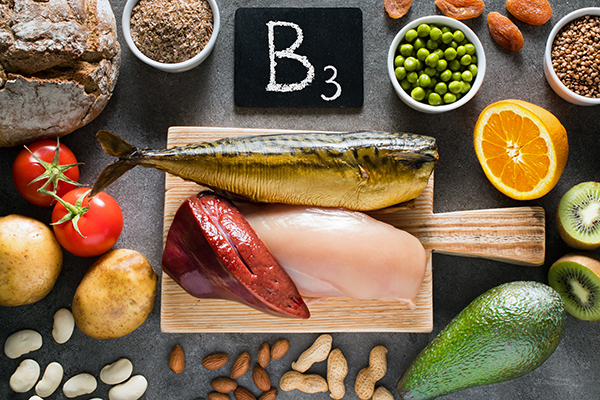
( Natural News ) Vitamin B3 is one of eight B vitamins that help the body convert carbohydrates from many kinds of foods into fuel.
There are three main forms of vitamin B3 – nicotinamide riboside , niacin and nicotinamide . Each form of vitamin B3 affects the body in different ways.
Here are some of the science-backed health benefits of vitamin B3, with particular focus on niacin and nicotinamide. Vitamin B3 prevents skin cancer
In a study published in the New England Journal of Medicine (NEJM), Australian researchers expounded on the protective effects of vitamin B3 against skin damage caused by ultraviolet (UV) radiation. UV radiation is the most common cause of skin cancer. The results of the double-blind, randomized clinical trial showed that nicotinamide can reduce the risk of basal cell carcinoma development by 23 percent. The study also found that nicotinamide can reduce the risk of squamous cell carcinoma development by 30 percent. (Related: Niacin – vitamin B3 can prevent melanoma, scientists confirm .) Vitamin B3 promotes cardiovascular health
A study published July 2015 in Medical Science Monitor showed the ability of niacin to reduce the level of lipids and lipoproteins in the blood . Niacin subsequently caused a decreased triglyceride levels – lowering the risk of heart disease. The same study also revealed that niacin helps increase the production of adiponectin, a hormone that minimizes the formation of fatty deposits in the arteries. Vitamin B3 supports skin health
Using topical and oral nicotinamide helped boost cellular energy and regulated the production of a key enzyme that aids in skin DNA repair and the suppression of inflammatory cytokines, according to a study published in the Australasian Journal of Dermatology. “Nicotinamide shows promise for the treatment of a wide range of dermatological conditions, including autoimmune blistering disorders, acne, rosacea, ageing skin and atopic dermatitis,” the study authors wrote. “In particular, recent studies have also shown it to be a potential agent for reducing actinic keratoses and preventing skin cancers.” Vitamin B3 supports brain health
A paper published February 2019 in the International Journal of Molecular Sciences expounded on the effects of niacin supplementation on brain health . It found that vitamin B3 in the form of niacin protects the bran from neurodegenerative conditions, such as Alzheimer’s, Parkinson’s and Huntington’s diseases. “Optimal dietary intake of the vitamin will support neuronal health and delay neurodegeneration. What foods contain vitamin B3?
According to an article by Epoch Health , vitamin B3 in the form of nicotinamide can either be consumed from food sources or synthesized naturally by the human body.
A varied diet containing meat, fish, eggs, legumes, brown rice, nuts, seeds and mushrooms can provide sufficient amounts of nicotinamide. It is also a by product of tryptophan metabolism, with the body synthesizing 50 percent of this vitamin B3 form.
Several factors, however, can make a person deficient in this key vitamin. These include chronic diarrhea, intestinal inflammation, the intake of refined carbohydrates and refined sugar and alcohol consumption.
Moreover, over-consumption of corn can cause pellagra – a disease caused by vitamin B3 deficiency. Pellagra is a major disease risk in developing countries that rely on corn as a major food source. While corn is high in vitamin B3, it is bound to carbohydrates. This, in turn, makes it more difficult for the body to absorb this nutrient.
Nutrients.news has more stories about the health benefits of vitamin B3.
Watch this video that discusses six surprising health benefits of vitamin B3 , alongside the best dietary sources for it. No compatible source was found for this media. More related stories:
Vitamin B3 fights superbugs naturally: Study .
Vitamin B3 protects eye degeneration and may prevent glaucoma .
Supplementing with vitamin B3 precursor helps prevent hearing loss .
Vitamin B3 beats Big Pharma’s Zetia cholesterol drug .
Vitamin B3 blocks progression of multiple sclerosis .
Sources include:
TheEpochTimes.com
NEJM.org
MedSciMonit.com
OnlineLibrary.Wiley.com
MDPI.com
Brighteon.com
Gut-brain axis: How it works and its link to mental health
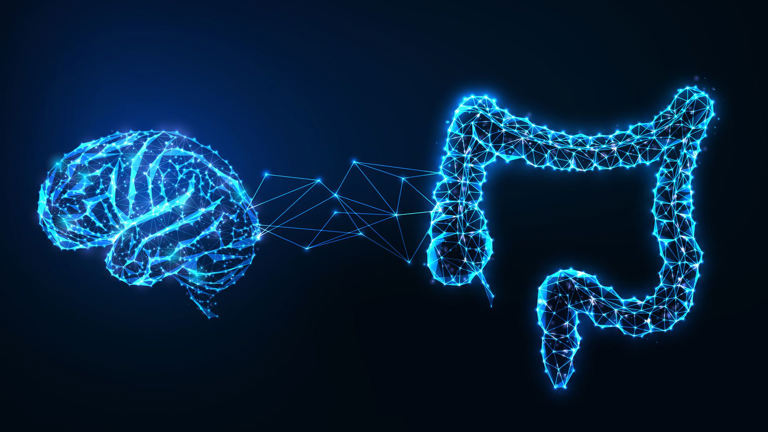
Whether it’s a nervous sensation in the stomach before an important presentation or “butterflies” at the sight of a loved one, many people are aware of the connection between the gut and the brain. But the gut-brain axis is a real phenomenon, describing a two-way communication between the central nervous system (CNS) and the enteric nervous system (ENS).
But with several different communication methods in both directions, scientists are still establishing exactly how it works. Here, we’ve unpacked some of the potential mechanisms behind the gut-brain axis and their implications for mental health. What is the gut-brain axis?
Grace Derocha , a registered dietitian in Chicago and a national spokesperson for the Academy of Nutrition and Dietetics, said that the gut-brain axis is a two-way communication that takes place between the gastrointestinal tract and the central nervous system.
“It links emotional and cognitive centers of the brain with intestinal functions,” she said. “A troubled gastrointestinal tract can send signals to the brain, just as a troubled brain can send signals to the gut.”
This gut-brain communication happens through a sophisticated network with multiple pathways. Here are some of them. Chemicals produced by gut microbes
Jane Foster, a professor of psychiatry at UT Southwestern in Texas, said that a key player within this communication system is the gastrointestinal tract, home to trillions of microbes.
A person’s diet has a significant impact on these microbes. Fiber , for example, is fermented by gut bacteria, which produce metabolites called short-chain fatty acids. These include butyrate, propionate, and acetate. According to a 2020 study, published in the journal Molecular and Cellular Neurosciences , short-chain fatty acids have the power to cross the blood-brain barrier, where they can impact brain structure and function. Inflammation
“The immune system is part of the gut-brain axis and is an important signaling cascade from microbes to the brain,” said Foster.
An imbalance in gut bacteria — known as dysbiosis — causes the barrier between the gut and the bloodstream to become permeable. This can allow “bad” bacteria to enter the bloodstream, potentially causing inflammation. A 2020 review, published in the journal Frontiers in Immunology , suggests that dysbiosis also alters the blood-brain barrier, contributing to inflammation of the brain matter. Inflammatory pathways have been linked to neuroinflammatory conditions including multiple sclerosis, Alzheimer’s and Parkinson’s diseases, as well as anxiety and depressive-like disorders. The vagus nerve
The human gut contains nearly 500 million neurons which are connected to the brain through nerves. The vagus nerve is one of the biggest nerves connecting the gastrointestinal tract to the nervous system and plays many important roles in the body.
Psychological stress, for example, may have a particularly harmful effect on the vagus nerve, with a 2014 study, published in the journal PLOS One , finding it may be involved in the development of gastrointestinal disorders like irritable bowel syndrome and inflammatory bowel disease. Neurotransmitters
The gut and the brain also communicate through chemicals called neurotransmitters. Some of these neurotransmitters are produced in the brain and are involved in regulating emotions, mood and the “fight or flight” response.
They can also be produced in the gut, affecting aspects of digestive, according to a 2016 review published in the Journal of Cellular Physiology . It found that neurotransmitters including norepinephrine, epinephrine, dopamine, and serotonin are able to regulate and control blood flow and affect bowel movements, nutrient absorption and the composition of the microbiome. Gut-brain axis and mental health: What’s the link?
Whilst there is emerging research, we’re only just beginning to understand the nature of the relationship between the gut-brain axis and mental health. Much of the evidence is based on animal research, so it is hard to draw conclusions about how this translates to humans.
It’s also hard to establish cause and effect when it comes to the relationship between the gut and the brain.
“A person’s intestinal distress can be the cause or the result of anxiety, stress, or depression,” said Derocha.
Diversity and balance are hallmarks of a healthy gut microbiome. Research suggests there might be links between the types of microorganisms in a person’s gut and their mental health.
“The microbiome of a person with a mental health problem is different from a healthy person,” said Foster. “Alzheimer’s disease and Parkinson’s disease are [also] linked to a different profile of microbes in the gut.”
A 2021 review, published in the journal Pharmacological Research , suggests that poor gut health may contribute to the onset and progression of mental health conditions, including depression and anxiety. In patients suffering from depressive disorder, levels of Enterobacteriaceae and Alistipes (“bad” bacteria) were enhanced, whilst the level of Faecalibacterium (“good” bacteria) was reduced. The researchers also found that there was less diversity in gut bacteria in patients with mental disorders, as well as a decrease in bacteria producing short chain fatty acids. However, again, it is not clear whether changes in gut bacteria influence mood disorders or vice versa. Nutrition and mental health
Probiotics — beneficial bacteria found in fermented foods and dietary supplements — can support gastrointestinal health, according to a 2016 meta-analysis published in the journal PLos One . A promising new field known as psychobiotics is considering the role that probiotics could play in alleviating mental health symptoms. However, further research is needed. Cognition and memory
Emerging evidence identifies a correlation between the gut microbiome and cognitive performance. A 2017 study, published in the Journal of the International Neuropsychological Society , found a link between gut microbiome composition and cognition in older adults. Individuals with lower proportions of Bacteroidetes and Proteobacteria and higher proportions of Firmicutes and Verrucomicrobia performed significantly better on tests associated with attention, learning and memory.
This article is for informational purposes only and is not meant to offer medical advice.
Study examines the role of brain-gut microbiome system in discrimination-related health issues
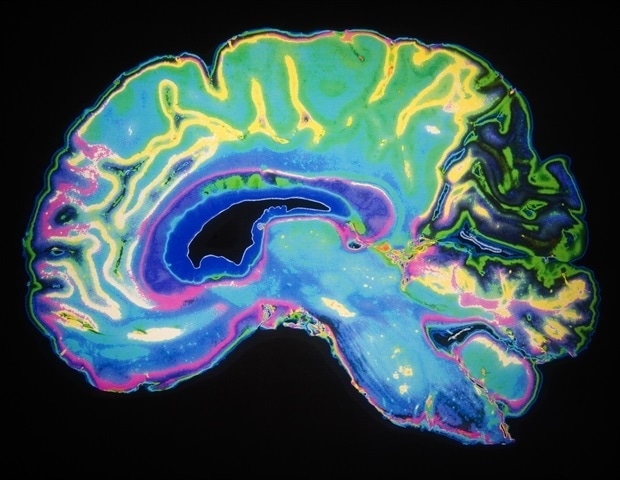
Structural racism has not only psychosocial but also biological consequences. Discrimination has been shown to contribute to mental and physical disorders including obesity, depression, and addiction, but the biological pathways from a social experience to its impacts on the body remain unknown. A new study examines the role of the brain-gut microbiome (BGM) system in discrimination-related health issues.
Past research around discrimination and illness pointed to the hypothalamic-pituitary-adrenal axis, which regulates stress, but the authors wanted to broaden their scope. Recent studies have found that the BGM is also highly responsive to stressful experiences. Dysregulation of the BGM is associated with inflammation and long-term health issues resulting from immune cell, neuronal, and hormone signaling that link our experiences to our health.
The new study, led by Tien S. Dong, MD, PhD, and Gilbert C. Gee, PhD, at UCLA, tests the hypothesis that discrimination influences the central and enteric nervous systems, thus altering the bidirectional signaling between the brain and gut microbiome as mediated by inflammation.
Recognizing that past research exploring discrimination and illness predominantly compared Black and White individuals, the authors investigated multiple racial and ethnic groups. The study included 154 adults in the Los Angeles community who self-reported their race or ethnicity as Asian American, Black, Hispanic, or White. Participants completed questionnaires to assess experiences of discrimination.
Participants of all ethnic and racial backgrounds reported experiences of discrimination, although they reported a variety of reasons for discrimination, ranging from race to sex to age. These different reasons were associated with different changes in the BGM system across the different racial and ethnic groups.” Dr. Tien S. Dong, MD, PhD The researchers collected functional magnetic resonance imaging data to assess the link between discrimination and brain connectivity. They also collected blood samples to measure inflammatory markers and fecal samples to assess the microbial population and its metabolites. Together, these metrics were used to assess discrimination-related BGM alterations and psychological variables, while controlling for sex, age, body mass index, and diet.
“Our research suggests that for Black and Hispanic individuals, discrimination leads to changes that include increased systemic inflammation,” explained Dr. Dong. “For Asian individuals, the patterns suggest [that] possible responses to discrimination include somatization, or the production of multiple medical symptoms with no discernible known cause. Among White individuals, discrimination was related to anxiety but not inflammation. But just as importantly, for all races, discrimination also had an increase in the emotional arousal and limbic regions of the brain, which are associated with the stress response of fight or flight. We also saw elevations in pro-inflammatory microbes such as Prevotella copri .”
John Krystal, MD, editor of Biological Psychiatry , said, “This new study sheds light on the broad impact of exposure to racism on emotions, brain activity, inflammatory markers in the blood, and the composition of the gut microbiome. We would not be surprised to learn that exposure to racism affects how we feel and how we cope with this exposure and other life stresses. However, this study goes further to highlight brain patterns of response to racism and other factors that affect physical health, including the types of bacteria growing in the gut and the levels of inflammation in the body. These are factors that influence many disease processes in the body.”
The work suggests that discrimination produces group-specific effects on certain biological pathways, providing a first step toward understanding how social inequities become whole-body experiences.
Dong, T.S., et al. (2022) How Discrimination Gets Under the Skin: Biological Determinants of Discrimination Associated with Dysregulation of the Brain-Gut Microbiome System and Psychological Symptoms. Biological Psychiatry . doi.org/10.1016/j.biopsych.2022.10.011 .
Tags: Addiction , Anxiety , Bacteria , Blood , Body Mass Index , Brain , Cell , Depression , Diet , Hormone , Imaging , Inflammation , Magnetic Resonance Imaging , Metabolites , Microbiome , Obesity , Psychiatry , Research , Somatization , Stress
Poor Gut Health May Drive Multiple Sclerosis, but a Better Diet May Ease It
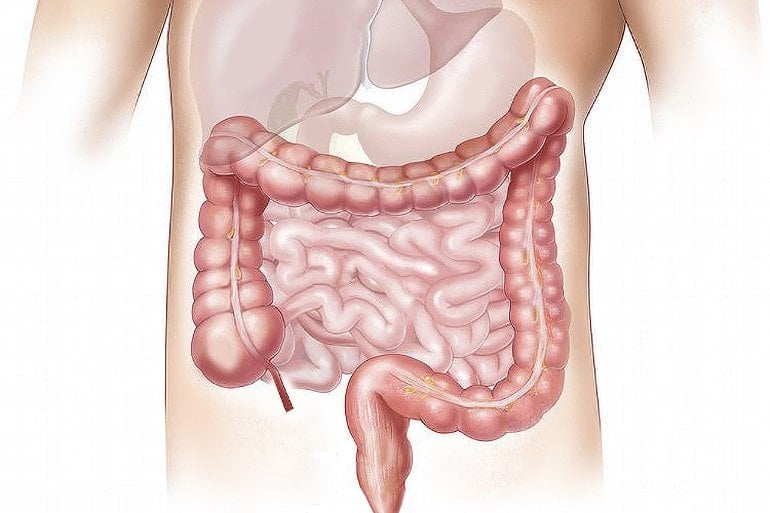
Summary: Researchers found significantly higher levels of Lcn-2 levels in the stools of patients with multiple sclerosis. This marker correlated with reduced bacterial diversity and increases in other markers of intestinal inflammation. Bacteria that ease inflammatory bowel disease were also reduced in MS patients with high fecal levels of Lcn-2 levels.
Source: Rutgers University
Researchers from Rutgers Robert Wood Johnson Medical School’s Department of Neurology have traced a previously observed link between microscopic organisms in the digestive tract—collectively known as the gut microbiome—and multiple sclerosis (MS).
Their study in genetically altered mice and people supports the belief that dietary adjustments such as increased fiber may slow MS progression, and they are already working to test the effect of dietary interventions in MS patients.
“Unhealthy dietary habits such as low fiber and high fat consumption may have contributed to the steep rise of MS in the US,” said Kouichi Ito, an associate professor of neurology and senior author of the study published in Frontiers in Immunology . “In nations where people still eat more fiber, MS is far less common.”
MS is a degenerative condition in which the body’s immune system attacks the protective covering of nerves in the brain, spinal cord and eyes. According to the National Multiple Sclerosis Society, it affects nearly 1 million adults in the United States.
Several previous studies have differentiated the microbiomes of MS patients and healthy subjects, but, Ito said, they all noted different abnormalities, so it was impossible to tell what change, if any, was driving disease progression.
The Rutgers study, which was led by research associate Sudhir Kumar Yadav, used mice engineered with MS-associated genes to trace the link between alterations in the gut bacteria and an MS-like condition called experimental autoimmune encephalomyelitis (EAE).
As these mice matured—and simultaneously developed EAE and a gut inflammatory condition called colitis—the researchers observed increased recruitment of inflammatory cells (neutrophils) to the colon and production of an anti-microbial protein called lipocalin 2 (Lcn-2). MS is a degenerative condition in which the body’s immune system attacks the protective covering of nerves in the brain, spinal cord and eyes. Image is in the public domain The study team then looked for evidence that the same process occurred in people with MS and found significantly elevated Lcn-2 levels in patient stool. This marker correlated with reduced bacterial diversity and increased levels of other markers of intestinal inflammation. Additionally, bacteria that seem to ease inflammatory bowel disease were reduced in MS patients with higher levels of fecal Lcn-2.
The study suggests that fecal Lcn-2 levels may be a sensitive marker for detecting unhealthy changes in the gut microbiome of MS patients. It also provides further evidence that high-fiber diets, which reduce gut inflammation, may help fight MS.
Rutgers is looking to test that hypothesis soon. Suhayl Dhib-Jalbut, a co-senior author of the paper who heads the medical school’s neurology department, is recruiting patients with MS for a trial that will determine how their microbiomes and immune systems are affected by a high-fiber supplement developed by Rutgers Microbiologist Liping Zhao. About this multiple sclerosis and microbiome research news
Author: Press Office
Source: Rutgers University
Contact: Press Office – Rutgers University
Image: The image is in the public domain
Original Research: Open access.
“ Fecal Lcn-2 level is a sensitive biological indicator for gut dysbiosis and intestinal inflammation in multiple sclerosis ” by Sudhir K. Yadav et al. Frontiers in Immunology
Abstract
Fecal Lcn-2 level is a sensitive biological indicator for gut dysbiosis and intestinal inflammation in multiple sclerosis
Multiple Sclerosis (MS) has been reported to be associated with intestinal inflammation and gut dysbiosis.
To elucidate the underlying biology of MS-linked gut inflammation, we investigated gut infiltration of immune cells during the development of spontaneous experimental autoimmune encephalomyelitis (EAE) in humanized transgenic (Tg) mice expressing HLA-DR2a and human T cell receptor (TCR) specific for myelin basic protein peptide (MBP87-99)/HLA-DR2a complexes.
Strikingly, we noted the simultaneous development of EAE and colitis, suggesting a link between autoimmune diseases of the central nervous system (CNS) and intestinal inflammation.
Examination of the colon in these mice revealed the infiltration of MBP-specific Th17 cells as well as recruitment of neutrophils.
Furthermore, we observed that fecal Lipocalin-2 (Lcn-2), a biomarker of intestinal inflammation, was significantly elevated and predominantly produced by the gut-infiltrating neutrophils.
We then extended our findings to MS patients and demonstrate that their fecal Lcn-2 levels are significantly elevated compared to healthy donors (HDs).
The elevation of fecal Lcn-2 levels correlated with reduced bacterial diversity and increased levels of other intestinal inflammation markers including neutrophil elastase and calprotectin.
Of interest, bacteria thought to be beneficial for inflammatory bowel disease (IBD) such as Anaerobutyricum, Blautia, and Roseburia , were reduced in fecal Lcn-2-high MS patients.
We also observed a decreasing trend in serum acetate (a short-chain fatty acid) levels in MS Lcn-2-high patients compared to HDs. Furthermore, a decrease in the relative abundance of Blautia massiliensis was significantly associated with a reduction of acetate in the serum of MS patients.This study suggests that gut infiltration of Th17 cells and recruitment of neutrophils are associated with the development of gut dysbiosis and intestinal inflammation, and that fecal Lcn-2 level is a sensitive biological indicator for gut dysbiosis in multiple sclerosis.
Cinnamon found to help prevent Alzheimer’s disease

( Natural News ) Cinnamon is a spice often associated with the fall season in America. It is the reason why apple pies and gingerbread lattes have that warm, traditional scent. But aside from brightening up these fall favorites, cinnamon can also help prevent Alzheimer’s disease .
Cinnamon has been used worldwide for thousands of years. Ancient Egyptians used cinnamon mainly for preservation and religious rituals. The ancient Chinese, however, used cinnamon as a medicinal herb. The traditional Chinese medicine (TCM) treatise “The Divine Farmer’s Classic of Materia Medica” describes cinnamon as an herb that carries a spicy, warm and nontoxic flavor.
Even now, TCM still uses cinnamon for warming the spleen, kidney, heart and liver meridians and unblocking veins. It is also a natural pain killer and is widely used for treating multiple diseases. (Related: The health benefits of cinnamon and how to use this amazing spice. )
One study published in Pharmacological Research elaborated on how this spice aids in preventing Alzheimer’s disease , a neurodegenerative disorder. The disease is characterized by the accumulation of abnormal tau proteins and the formation of amyloid beta (A?) plaques in the brain.
According to the researchers, the biologically active ingredients in cinnamon extract “efficiently inhibits tau [protein] accumulations, A B aggregation and toxicity [in both] in vivo and in vitro models.” Moreover, polyphenols – plant-based nutrients – found in cinnamon address oxidative stress and pro-inflammatory signaling pathways in the brain. They explained that polyphenols in cinnamon can interact with A B peptides before they start accumulating and becoming A B plaques, stopping their formation.
“When cinnamon is ingested in the body, it undergoes extensive metabolism both in the small and large intestine and in the liver as well,” the researchers noted. “The ability of cinnamon to affect the nervous system will mostly depend on [its] metabolites’ ability to cross the [blood-brain barrier].” Cinnamon also a strong antibacterial
Aside from protecting against Alzheimer’s disease, cinnamon has also been shown to protect against bacterial pathogens . A study published in Antibiotics showed that cinnamon can act on different kinds of bacteria such as Staphylococcus aureus , Escherichia coli and Salmonella typhimurium .
“Foodborne pathogens could potentially be managed using new therapeutic agents from natural sources,” wrote the study authors. “Therefore, we approved the use of cinnamon oil instead of chemical preservatives, in addition to its therapeutic use when co-administered with other antibiotics.”
Cinnamon can easily be mixed with foods. A good sprinkling of this spice in desserts such as apple pies, muffins and French toast will not only impart a warm scent, but also its potential health benefits. Those looking to brighten up their day can sprinkle cinnamon on their breakfast porridge or muesli.
Cinnamon can also spice up beverages. A sprinkling of this spice on coffee , pumpkin spice latte, black tea, hot cocoa or mulled wine gives a tinge of warmth with every sip. An even better idea would be to serve cinnamon sticks with hot drinks, with the sticks serving as reusable stirrers.
However, TCM clinician Dr. Lin Yipu warned: “Although cinnamon has many benefits, if consumed excessively – like many other things – it might cause side effects.” Overconsumption may cause injuries to the liver and kidneys, so Lin recommends a daily limit of six grams (0.2 ounces).
Pregnant women should be wary of overeating cinnamon as it can both harm them and their babies. Cinnamon is also a natural blood thinner, so anyone on such medications should consult their physician before taking cinnamon in any significant amount.
Herbs.news has more stories about the benefits of cinnamon.
Watch this video to learn about the 10 health benefits of cinnamon . No compatible source was found for this media. More related stories:
Antioxidant, anti-inflammatory, and more: the health benefits of cinnamon.
Blood cancers can be treated safely and naturally with cinnamon.
Cinnamon: A sweet-spicy treat for fighting Alzheimer’s.
Can cinnamon extracts help with diabetes and obesity?
Sources include:
TheEpochTimes.com
ScienceDirect.com
MDPI.com
Brighteon.com
6 Primary types of tea and their science-backed health benefits
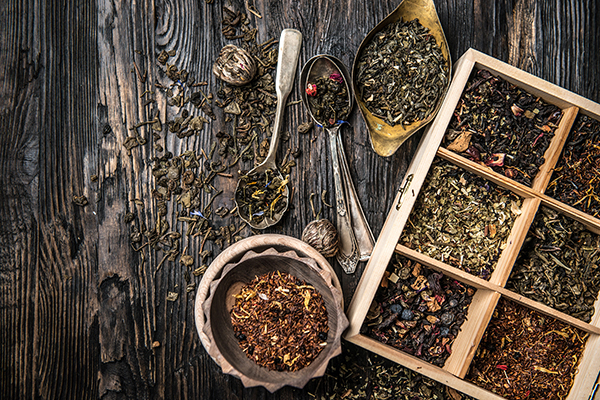
( Natural News ) All “true” teas come from the Camellia sinensis plant. And while there are over 3,000 varieties of teas, each with its own specific characteristics, they have been classified into six main types.
Tea experts explain that the differences between the types of teas are primarily due to where the tea is grown, the climate, soil conditions and how the leaves are processed after they are picked. Altogether, these factors determine the flavor characteristics of tea.
Numerous studies have shown that many tea varieties can boost your immune system and fight inflammation, cancer and heart disease. While some brews provide more healthful advantages than others, evidence suggest that regularly drinking a cup of tea can have a lasting impact on your overall health and wellness. Green tea
Green tea production endeavors to avoid the oxidation of tea leaves to retain their natural green color and fresh flavor. Oxidation is a natural chemical process that turns fresh tea leaves into black.
Once picked, the green tea leaves and buds are allowed to dry slightly in the cool shade for a few hours. After the leaves have cooled and dried slightly, they are quickly steamed or roasted for a couple of minutes. Once steamed, the leaves are quickly dried and stored.
Standard green tea uses regular tea leaves that are first heated by steaming or roasting. The leaves are then cooled and repeatedly rolled and dried to give them a light color and fresh, grassy flavor.
Studies, including one published in the journal Chinese Medicine , have touted green tea as one of the healthiest beverages on the planet, and the tea with the highest concentration of antioxidants and the greatest number of healthful benefits when compared to other types of tea. Because it is the least processed, green tea retains more of the tea’s natural antioxidants.
Green tea can help boost brain and heart health and fight different types of cancer and liver diseases. Long-term consumption of green tea is also beneficial against obesity and Type-2 diabetes. (Related: 6 scientifically proven benefits of green tea .) Black tea
Up to the mid-17th century, all Chinese tea was green tea. But as foreign trade increased, the Chinese tea growers discovered that they could preserve the tea leaves with a fermentation process – resulting in black tea.
Black tea is made from young leaves and leaf buds. Once picked, the tea leaves are rolled until they start to darken and turn red. The darkened leaves are spread out in a cool location and allowed to ferment in contact with air for two to three days. Once fermented, the leaves are quickly dried, fully withered and fully oxidized. Finished black teas are transferred to airtight containers for storage.
A study published in the International Journal of Health Sciences established that drinking black tea on a regular basis improves the antioxidant potential of the body – helping reduce the risk of chronic disorders and improve overall health.
Black tea commonly yields a hearty, amber-colored brew. Some of the most popular types of black teas are bold breakfast teas: Assam, Darjeeling, English Breakfast, Irish Breakfast, Keemun, Lapsang and Souchong. Oolong tea
Produced mainly in China and Taiwan, oolong tea is made from young tea leaves and leaf buds. Tea leaves for oolong tea are allowed to ferment for about 45 minutes in the sun, turned frequently to allow air to reach all parts of the leaves. After the sun time, the leaves are moved and allowed to sit in the shade for a few hours at room temperature. As the leaves dry, their edges begin to turn red. Once the leaves have changed color, they are quickly dried and stored.
Depending on how long it’s aged, oolong tea can range from green to a dark brown color. Its flavor is light and floral but way less perfumy than green tea.
Health benefits of oolong tea include healthy cognitive function, healthy blood sugar level, fat-burning boost, bone strength, cancer prevention, healthy cholesterol level, stress relief, oral health, skin health and a healthy gut. Oolong tea has all been found to have great antioxidant and antibacterial properties. Pu-erh tea
Coming exclusively from Yunnan, China, pu-erh tea is famous for its distinctively earthy flavor. It has been fermented, often stored underground for several years and traditionally compressed into bricks or round cakes.
Drinking pu-erh tea comes with its own perks.
A study published in the journal Nutrition Research showed that taking high doses of pu-erh tea extract is tied to weight loss, reduced body mass index and less abdominal fat , thanks to its gallic acid content.
Pu-erh tea has been shown to stabilize blood sugar, keep cholesterol in check, support liver health. It may have an anti-cancer effect as well, which is a good starting point for research on future treatments, according to researchers. White tea
White tea is simply withered and dried, causing very light oxidation. Its flavor is similar to that of green tea, but is usually more creamy, soft and sweet.
Like pretty much all other types of teas, white tea also comes with a number of health benefits. It has antioxidant properties and can boost heart health and brain health. According to an article published in Nonvitamin and Nonmineral Nutritional Supplements , white tea can also make your teeth, bones, skin and hair healthier. Yellow tea
Said to be the rarest type of tea, yellow tea (called huangcha in Chinese) is processed like green tea but is more slowly dried to make the leaves take on a yellow color. Yellow tea has a mild and silky taste and was once treated as a drink only meant for the royals and elite. It is an expensive and luxurious tea with a unique aroma.
The polyphenols derived from yellow tea have been found to combat oxidative stress and protect your skin from the signs of photoaging and protect you from heart disease and cancer. Specific polyphenols in yellow tea can also help improve blood sugar control and benefit people with diabetes.
Visit FoodIsMedicine.com for more stories about […]
Autopsies confirm: Covid-19 vaccine causes fatal heart inflammation or “Sudden Adult Death Syndrome”

( Natural News ) Previously healthy individuals are dying “suddenly and unexpectedly” after covid-19 vaccination. These individuals are of all ages, and many show no sign of pre-existing heart conditions. A new medical term– Sudden Adult Death Syndrome (SADS) was created to categorize these unexplained deaths . Vaccination is intended to protect individuals from infections and to prolong their life; however, vaccinated individuals are being hospitalized and diagnosed with new heart problems (myocarditis and pericarditis) and vaccine-induced thrombotic thrombocytopenia. Sometimes, these vaccine injuries go undetected. Sometimes they are mild, but other times, they are fatal in the first week after vaccination.
In a new case study , twenty-five individuals who died after covid-19 vaccination showed inflammation of the heart that coincided with the inflammation caused in the deltoid muscle, post vaccination. Autopsies confirm covid jabs cause fatal inflammation of the heart muscle
Medical examiners from Germany conducted autopsies on thirty-five individuals who died within twenty days after taking a second dose of the covid-19 mRNA vaccine (Comirnaty & Spikevax). They concluded that ten of the fatalities were clearly not due to the vaccine, due to evidence of drug overdose. The majority of the fatalities (71%) presented vascular damage that is specific to vaccine injuries, including rapid heart failure, vascular aneurysm, pulmonary embolism, myocardial infarction, fatal stroke, and vaccine-induced thrombotic thrombocytopenia.
A closer examination of five of these cases showed new onset inflammation in the cardiovascular system and histopathologies directly in the heart muscle. These five individuals were diagnosed with lymphocytic (epi-)myocarditis and died suddenly in their homes in the first week after covid-19 mRNA vaccination. The medical examiners found patchy inflammation in the heart muscle that mirrored the same patchy inflammation that is induced in the deltoid muscles after covid-19 mRNA vaccination. Previous studies have shown that the translated spike proteins do not stay in the deltoid muscle and degrade. In cases of vaccine injury, the translated spike proteins are not neutralized by the immune system; instead, they were found reproducing uncontrollably and traveling throughout the body to distal organs, including the heart. Other studies corroborate the reality that vaccine-induced spike proteins and mRNA persist for weeks in lymph nodes.
The medical examiners determined that a causal link between the covid-19 vaccine and deadly myocarditis was based on: a close temporal relation to vaccination (within 1 week of administration); absence of any other significant pre-existing heart disease in the deceased (especially ischaemic heart disease or cardiomyopathy); negative testing for potential myocarditis-causing infectious agents; and finally, presence of a peculiar CD4 predominant T-cell infiltrate, suggesting an immune mediated mechanism brought on by the vaccine.
“Histology showed patchy interstitial myocardial T-lymphocytic infiltration, predominantly of the CD4 positive subset, associated with mild myocyte damage,” the researchers wrote. “Overall, autopsy findings indicated death due to acute arrhythmogenic cardiac failure. Thus, myocarditis can be a potentially lethal complication following mRNA-based anti-SARS-CoV-2 vaccination.” Autopsies and non-biased medical examiners must explore histopathologies behind covid-19 vaccine fatalities
Autopsies are essential to determine if the covid-19 vaccines are the cause of sudden and unexpected death. These autopsies must be conducted by non-biased medical professionals who are open to investigating the histopathologies behind potential vaccine injury. Equally important: medical examiners must be aware of the issues with mRNA technology, must be able to track the inflammation caused by the vaccine’s spike proteins, and must be open to investigating the various histopathologies behind vaccine damage. Many of these underlying vaccine injuries are not fully understood or accepted, such as the spike proteins’ potential to inflame the nervous system and the brain stem. Inflammation of the nervous system could affect a person’s mood, impulsivity, mental health, drug use, and suicide risk, but these issues are yet to be addressed in autopsies and other medical examinations.
Dr. Peter McCullough posted on his sub stack : “The very high yield of post-vaccination autopsy should spur families and physicians to push for post-mortem exams so we can learn more on how this medical procedure is leading to such a large loss of human life.”
Sources include:
TheEpochTimes.com
Link.Springer.com
Cell.com
PeterMcCulloughMD.substack.com
